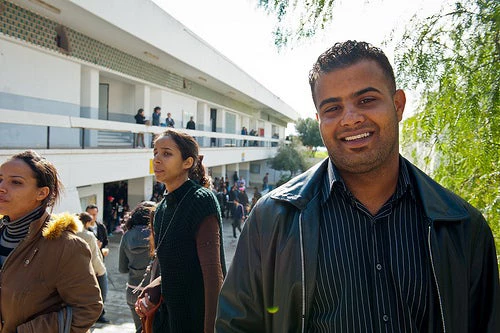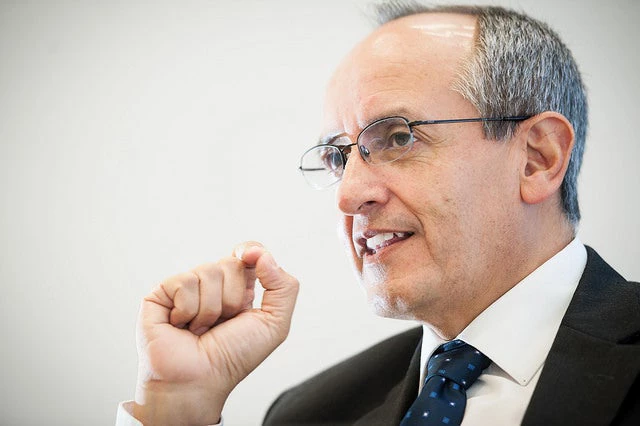
These past few months have taken me across the world, from Latin America, to the Middle East, Africa, South East Asia, and Europe, on a journey that has provided me the unique and privileged opportunity to reflect on the challenges and opportunities that tertiary education is facing in the world. It is precisely such reasoning that led us, at the World Bank to organize a year-long lecture and panel series entitled “Tertiary Education at a Crossroads” during which we hope to engage in collective reflection on issues and trends in tertiary education, and confront them with an ambitious agenda towards eliminating extreme poverty in the world, by enabling shared prosperity in a sustainable planet.
The first of these sessions was held recently. A diverse group of educators from more than 25 countries analyzed one of the many puzzling challenges that we face in today’s world: the linkages between tertiary education and employability. This topic is particularly important considering that even though there should be a relatively seamless pathway between tertiary education and employability, this route is often ridden with a plethora of potholes.
Recent evidence suggests that a large number of graduates of tertiary education in different parts of the world will not able to find adequate jobs –or jobs at all. This is both disturbing and concerning but it is also just one of the many issues that merit reflection and attention. The same applies to areas such as quality assurance, financing, equity in access and retention, institutional governance, internationalization, institutional diversification, tensions between research and teaching, etc.
Of course, building a list of challenges in tertiary education is a relatively easy task, despite the fact that each local, national and regional context is quite unique. But, I find that it is also easy to identify interesting commonalties around the world.
I see that there is not much difference between students in Mexico, India, Saudi Arabia, Russia, the U.S., Armenia, or Botswana. They are all anxious and disappointed with what they see around them. At the same time, I see them excited about a future in which they can make a difference.
On the other hand, policymakers have their own concerns, which are often quite similar, regardless of which country they live in. In either Colombia, England, or Uganda there is a shared concern about resistance to change in institutions, and competing demands for limited resources.
Employers are in a similar position, be it in Italy, Tanzania, or Chile with frustrations about the existing gap between the skills required for jobs and what they perceive as the limited capacity of tertiary education institutions to rapidly respond to their needs. But many times, employers themselves have an equally limited capacity to coherently and consistently tell the tertiary education sector about their anticipated needs for the future.
Faculty members from Malaysia, Jamaica, and South Africa share concerns about ill-prepared and uninterested students and the limited attention they receive from institutional administrators.
Institutional leaders from Tunisia, Canada, Vietnam, Panama or Spain recognize their limited capacity to foster change inside their institutions, and see increased and sometimes conflicting demands for action.
It almost seems like, in today’s times “misery loves company.”
No question that challenges are significant and daunting. However, I am an incorrigible optimist. I see positive commonalities, especially in the case of the students. Regardless of their location, they share an exciting curiosity and appetite for new knowledge, skills and opportunities. In Gujarat, India a student from Pandeet Dindayal Petroleum University told me “It is about the opportunity to have a better life,” when I asked him about the value of higher education. “And, it is about enabling those around you to improve their chance at a better life.” Students recognize that today’s world is much more diverse, and that such diversity is seen as an asset rather than a liability. “It is about being able to develop someone’s full potential,” a female student from Effat University in Jeddah, Saudi Arabia, responded when asked the same question. “Higher education allows me to open my eyes to the world while strengthening my values and identity.”
They express hope for changing the world that they will inherit. “It is about questioning the world in which we live today, and coming up with innovative solutions,” a student from my Alma Mater, the Autonomous University of San Luis Potosi in Mexico said to me. “We can make a better world!”
And I agree that all of us can make a better world, and there is no question that tertiary education has an important role to play in making this possible. First of all, tertiary education is a key factor to foster the economic and social mobility of a country. The good news is that now, across the world, more students than ever benefit from being enrolled in some type of tertiary education institution. Today, there are around 200 million tertiary education students worldwide, in comparison with only 89 million in 1998. An increase of 124 % in only 15 years!
Also, despite setbacks associated with the recent financial crisis, the economic returns to education for graduates of tertiary education institutions are quite high, as it is indicated on a recent study conducted by the World Bank. Even countries that suffer with the twin burden of a greater fiscal crises and a less diversified tertiary education system show promise as their unemployment rates for tertiary education graduates, in general, tend to be lower. All of the above requires renewed attention into ways in which tertiary education institutions can become more effective and better connect with the current and anticipated needs of the economy and society. The same applies to tertiary education and employment policies, especially at regional and national levels. As Tony Carnevale, director of Georgetown University’s Center for Workforce Development expressed during our recent “Tertiary Education at a Crossroads” meeting, “more and more policy is focusing on the relationship between higher education institutions and the preparation of the workforce.”
Let me end by reminding us that we live in exciting albeit challenging times, and tertiary education should and can adapt faster and more efficiently to better serve economic and societal needs. It is not an easy task but it is a feasible task. As Paul Valéry said: “the trouble with our times is that the future is not what it used to be.”


Join the Conversation